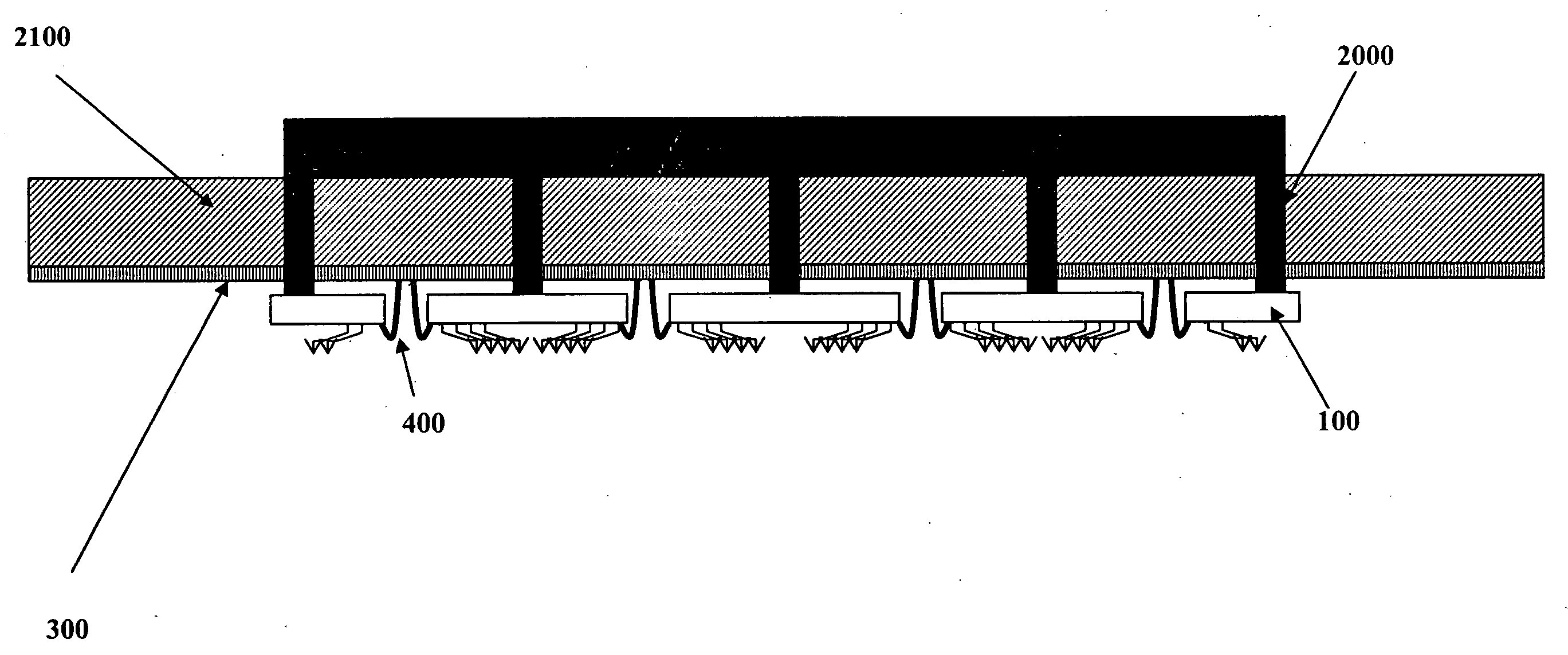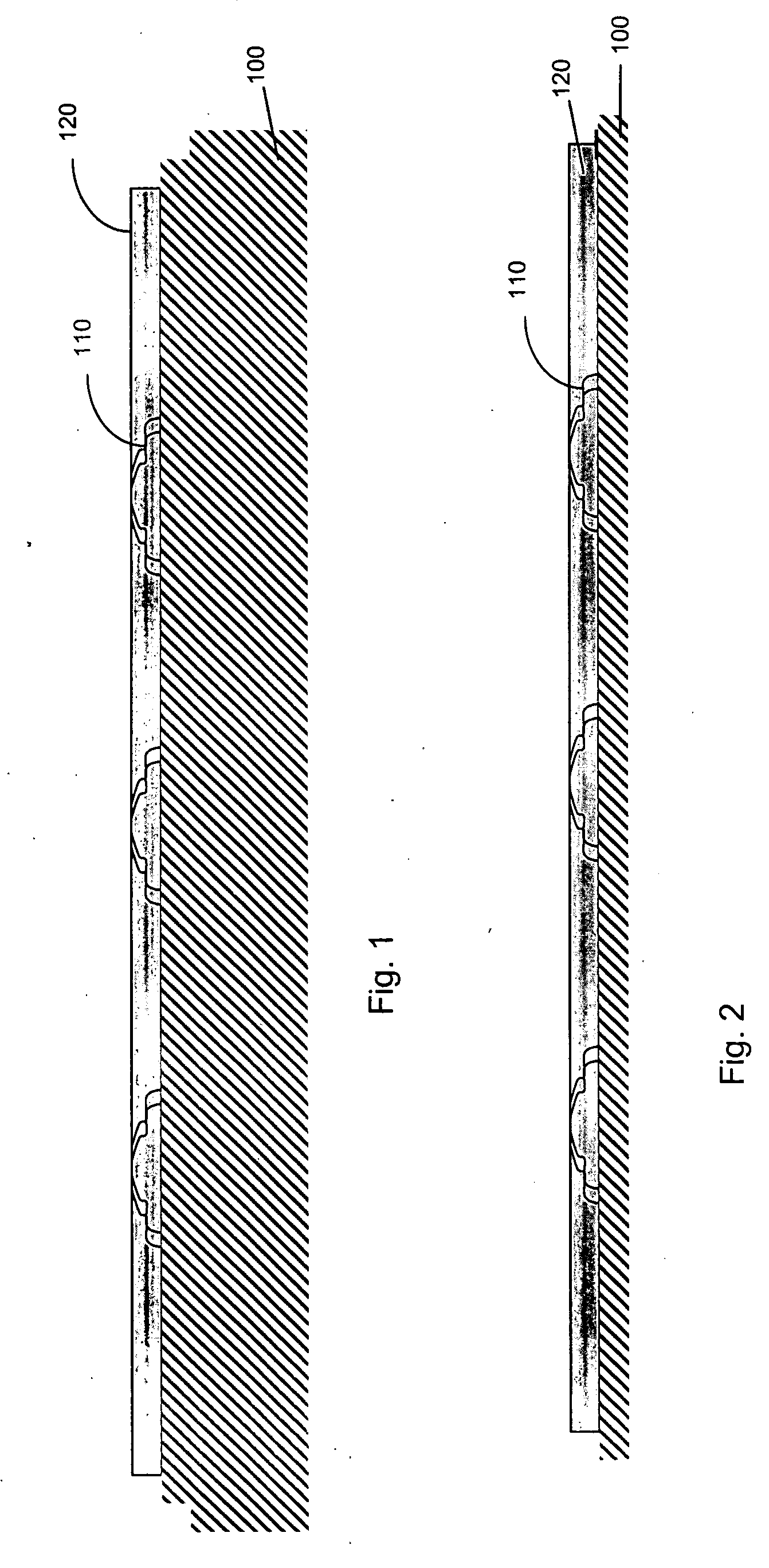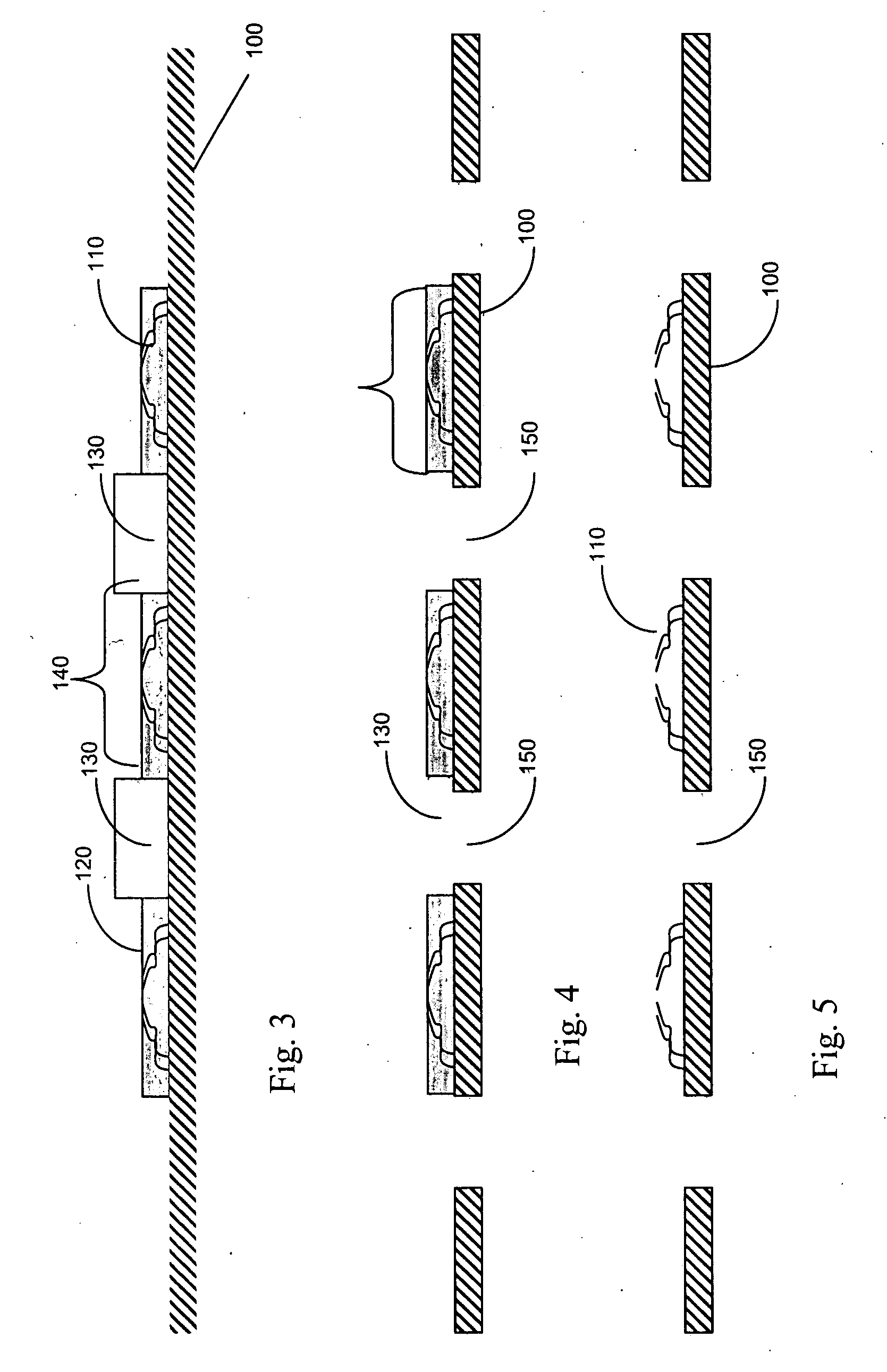Probe card substrate with bonded via
a technology of bonded via and probe card, which is applied in the direction of electrical testing, measurement devices, instruments, etc., can solve the problems of increasing the time required to manufacture a finished probe card assembly, ltcc/htcc substrates are not ideal substrates for mems manufacturing, and the time required to manufacture space transformers and probe contactors is typically the most time-consuming. , to achieve the effect of significant time saving
- Summary
- Abstract
- Description
- Claims
- Application Information
AI Technical Summary
Benefits of technology
Problems solved by technology
Method used
Image
Examples
Embodiment Construction
[0023]FIGS. 1-8 illustrate a process for forming an embodiment of the present invention. As shown in FIG. 1, a probe contactor substrate 100 is chosen. Because of the unique way in which the probe card assembly is fashioned, the probe contactor substrate 100 is not limited to materials generally used as probe contactor substrates, namely LTCC, HTCC, ceramics with vias, or multi-layer HDI substrates. Because the probe contactor substrate does not require electrical vias through the substrate, the substrate may be any suitable material. In an embodiment of the present invention the probe contactor substrate 100 is an alumina ceramic substrate. When used to test semiconductors, generally the probe contactor substrate should exhibit qualities such as good thermal expansion matching that of silicon (because the device under test is usually silicon), good surface quality (low pitting, excellent planarity and surface roughness), good electrical properties for high frequency signal transmis...
PUM
| Property | Measurement | Unit |
|---|---|---|
| distance | aaaaa | aaaaa |
| distance | aaaaa | aaaaa |
| distance | aaaaa | aaaaa |
Abstract
Description
Claims
Application Information
 Login to View More
Login to View More - R&D
- Intellectual Property
- Life Sciences
- Materials
- Tech Scout
- Unparalleled Data Quality
- Higher Quality Content
- 60% Fewer Hallucinations
Browse by: Latest US Patents, China's latest patents, Technical Efficacy Thesaurus, Application Domain, Technology Topic, Popular Technical Reports.
© 2025 PatSnap. All rights reserved.Legal|Privacy policy|Modern Slavery Act Transparency Statement|Sitemap|About US| Contact US: help@patsnap.com



